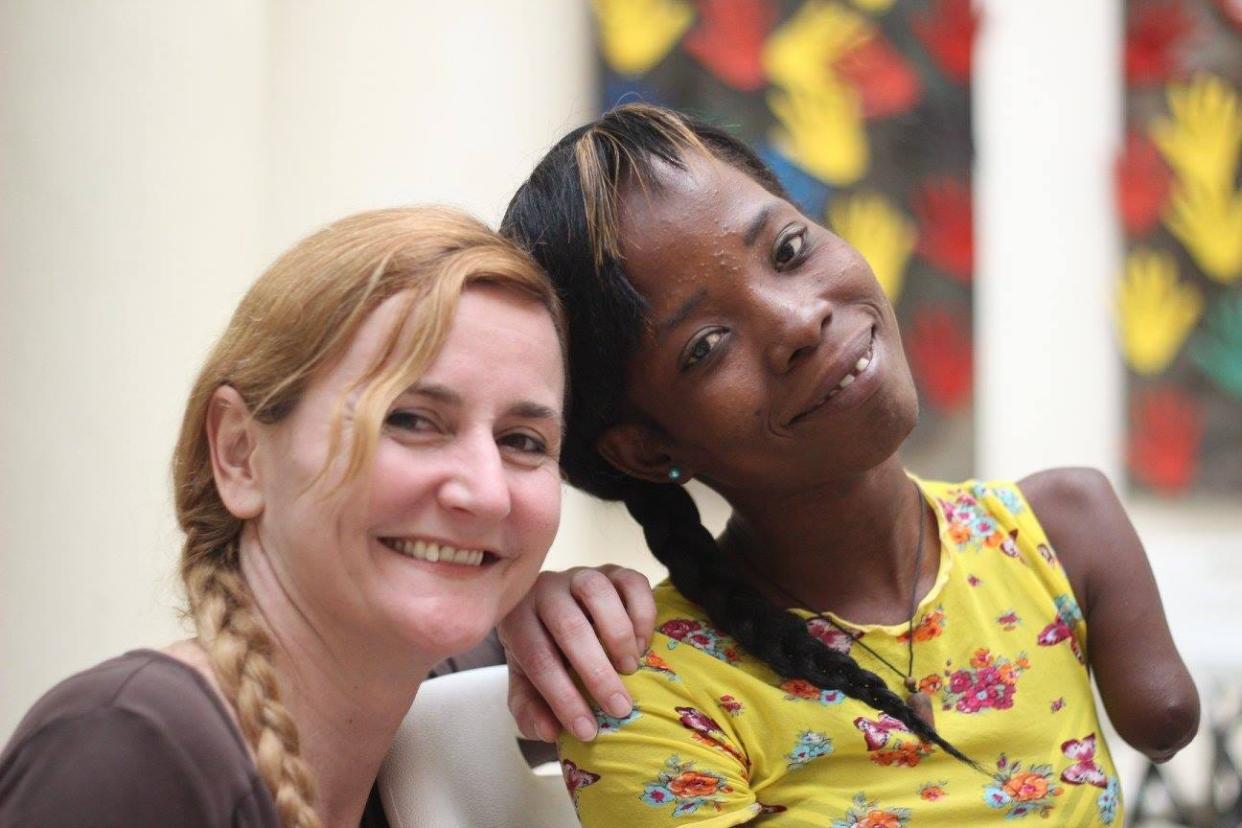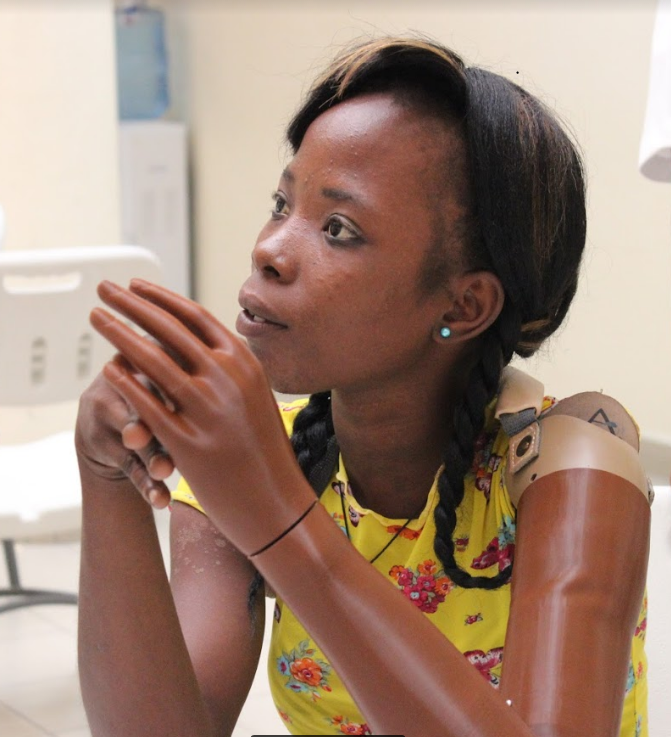An RIT professor offers new limbs and dignity to those in need
When Jade Myers of the Rochester Institute of Technology talks about the power of 3D printed prosthetic limbs, she emphasizes the ordinary but vital joys they can bring.
With a new hand, you can braid a daughter’s hair. You can tie your own shoes. You can do all the things that most of us take for granted. With the new limb, you can also blend in, you can work, you can be free.
“And, long term, there’s a ripple effect,” Myers says. “It’s not just one life. You can change the whole trajectory of a family with a limb. To witness this is very rewarding.”
A recent PhD in mechanical and industrial engineering at RIT, Myers knows from her own personal experience how lives can be transformed, as she survived a period of domestic abuse to go on to a remarkable career.
She’s now a research development specialist at RIT’s AMPrint Center, a lab devoted to 3D printing. She also teaches prosthetics and medical design engineering there. She consults worldwide.
Helping in Haiti

In 2017, when she was a graduate student at RIT, Myers led a team that went to Haiti to fit people with prosthetic devices and to instruct local medical workers on the creation of prostheses using 3D.
Creating prostheses through 3D printing — using computer-aided design to inform the layering of materials — allows for greater customization of the new limb. Using lighter materials, the printing makes for ultra-personalized fit, better comfort, all at a lower cost. In addition, the printers are portable; they can be taken to the patient in areas where the patient can’t easily come to a clinic. And the prostheses can then be printed in hours.
Arriving in Haiti with past lessons in mind, Myers soon changed her approach. “I realized I was doing it backwards,” she says, “telling people what they needed, rather than listening to what they needed.”
She learned, for example, that it was important that the prostheses match the skin tone of the person receiving the limb. If it didn’t, the recipient stood out and was shunned. It was important to consider environmental factors, how different materials reacted to the weather, for example.
While there, Myers learned a great deal from, and bonded with, a young woman named Danie Exilus, who had lost her left arm in a 2010 earthquake in Haiti.
Without one arm, Exilus had been outcast and had to beg in the streets to feed her family. Once she had a prosthesis, she could work again. In time, she became an adviser to Myers, offering feedback on prosthetic design and with the training of those who would be creating prostheses in Haitian clinics.
“I would visit her three or four times a year,” Myers says. “Each time, she held her head a little higher. More and more, her dignity came back.”
Myers has led an effort to bring Exilus and her family to the United States, away from the gang violence that has rocked the country. “She looked at me and asked if I could help her get out of there,” Myers says. “I promised that I would try.” That promise has been kept. Myers says that. If all goes well, Exilus and her family will arrive soon.
Beyond the horrors

Like Exilus, Myers, who is 51, is someone who has overcome obstacles. In 2008, she was violently beaten, a victim of domestic abuse. Her face swollen, her spleen nearly ruptured, she lay on a hospital bed wondering if she wanted a future at all. Then a woman came into her room and put a card on her chest.
Myers later called the number on the card and got counseling. She was encouraged to apply for a scholarship through the Sunshine Lady Foundation that would give her at least one semester of college.
In 2010, Myers received her first scholarship and started at Finger Lakes Community College. Fearing that every semester would be her last, she worked hard and kept getting her scholarship renewed. The funding continued at RIT, where she did so well that she spoke at the 2015 graduation ceremony.
This spring Myers was awarded the institute’s 2023 Bruce R. James ’64 Distinguished Public Service Award in recognition of her bringing low-cost prostheses to people in low-resource areas.
Conditions are so bad in Haiti right now that Myers hasn’t been able to go back, but she can contact and advise caregivers there.
But, sadly, given wars and natural disasters elsewhere, there’s a high need for 3D printed limbs. In addition to teaching, Myers has more than enough to do. She vows to bring limbs, and dignity, to people around the world.
From his home in Geneseo, Livingston County, retired senior editor Jim Memmott, writes Remarkable Rochester, who we were, who we are. He can be reached at jmemmott@gannett.com or write Box 274, Geneseo, NY 14454
This article originally appeared on Rochester Democrat and Chronicle: RIT AMPrint Center prints 3D prosthetic limbs to those in need
